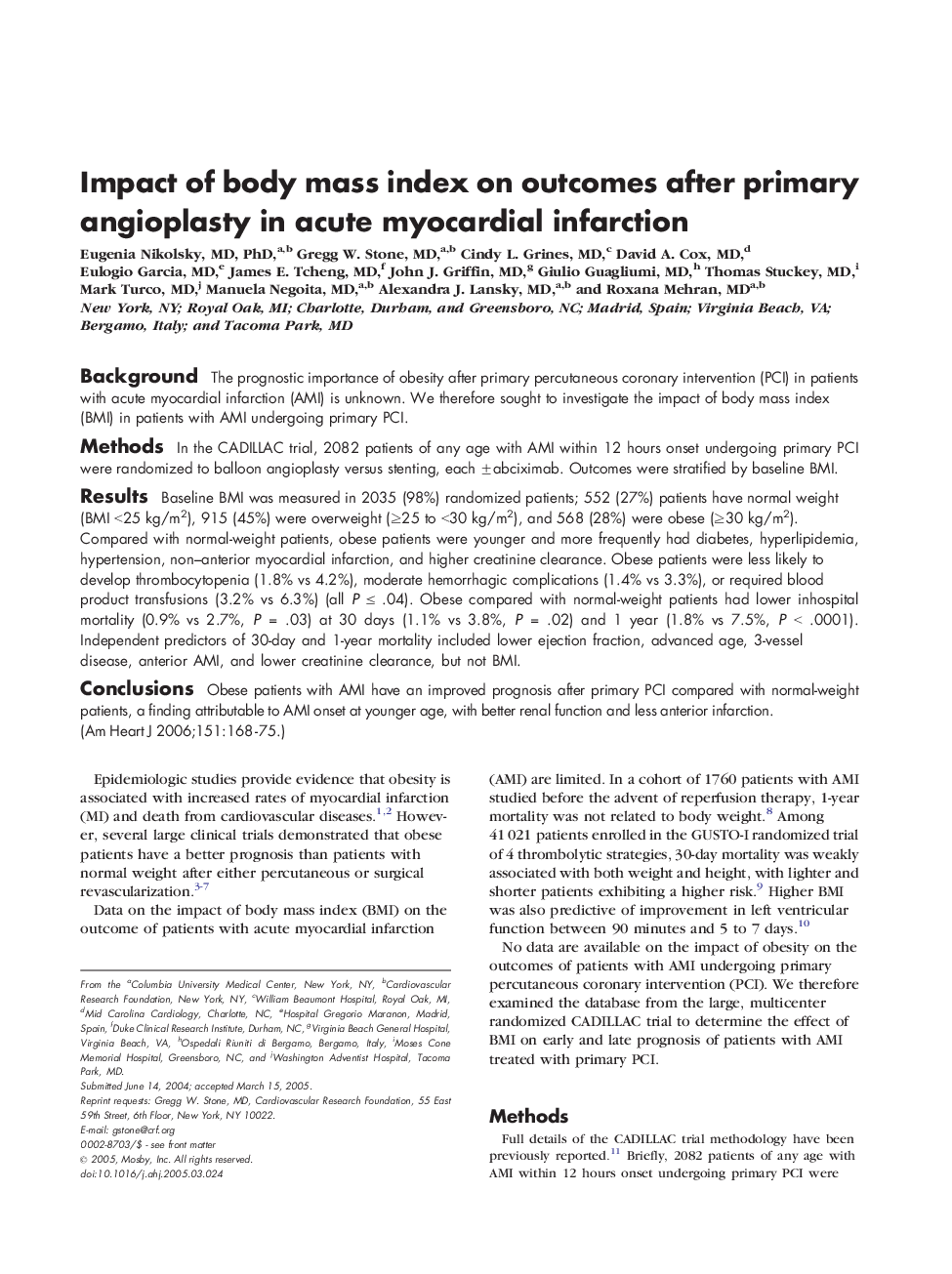| Article ID | Journal | Published Year | Pages | File Type |
|---|---|---|---|---|
| 2851438 | American Heart Journal | 2006 | 8 Pages |
BackgroundThe prognostic importance of obesity after primary percutaneous coronary intervention (PCI) in patients with acute myocardial infarction (AMI) is unknown. We therefore sought to investigate the impact of body mass index (BMI) in patients with AMI undergoing primary PCI.MethodsIn the CADILLAC trial, 2082 patients of any age with AMI within 12 hours onset undergoing primary PCI were randomized to balloon angioplasty versus stenting, each ±abciximab. Outcomes were stratified by baseline BMI.ResultsBaseline BMI was measured in 2035 (98%) randomized patients; 552 (27%) patients have normal weight (BMI <25 kg/m2), 915 (45%) were overweight (≥25 to <30 kg/m2), and 568 (28%) were obese (≥30 kg/m2). Compared with normal-weight patients, obese patients were younger and more frequently had diabetes, hyperlipidemia, hypertension, non–anterior myocardial infarction, and higher creatinine clearance. Obese patients were less likely to develop thrombocytopenia (1.8% vs 4.2%), moderate hemorrhagic complications (1.4% vs 3.3%), or required blood product transfusions (3.2% vs 6.3%) (all P ≤ .04). Obese compared with normal-weight patients had lower inhospital mortality (0.9% vs 2.7%, P = .03) at 30 days (1.1% vs 3.8%, P = .02) and 1 year (1.8% vs 7.5%, P < .0001). Independent predictors of 30-day and 1-year mortality included lower ejection fraction, advanced age, 3-vessel disease, anterior AMI, and lower creatinine clearance, but not BMI.ConclusionsObese patients with AMI have an improved prognosis after primary PCI compared with normal-weight patients, a finding attributable to AMI onset at younger age, with better renal function and less anterior infarction.
